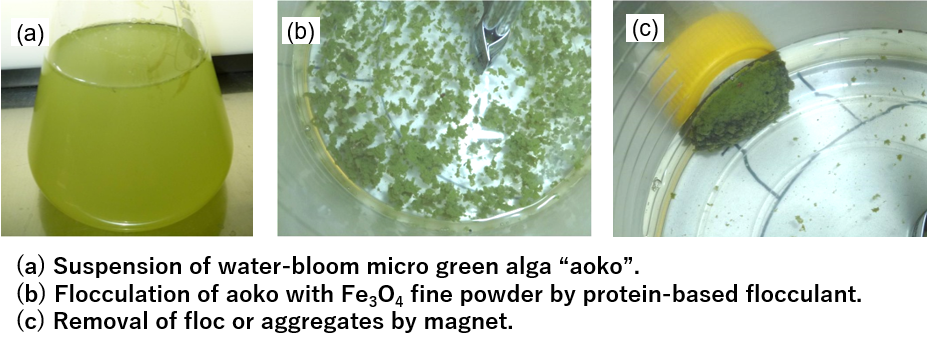On
the other hand, the suspended substances that have densities near water are
hard to settle even they form large flocs.
Next,
I would like to show the pictures of “magnetic separation of water-bloom green
alga”.
The flocculant
used in this experiment is the same as the above experiment.
The
densities of micro-organisms are very close to water and difficult to settle.
Then,
aoko was
flocculated with fine powder of Fe3O4 (magnetic particle) by soy-protein based
flocculant,
and removed by magnet.
